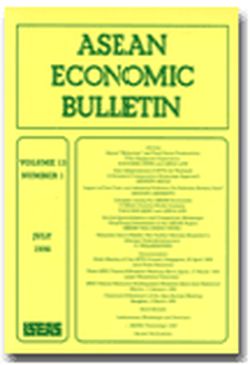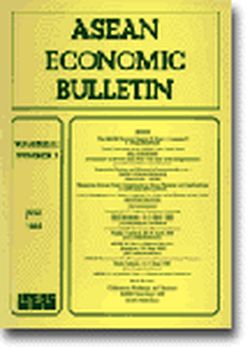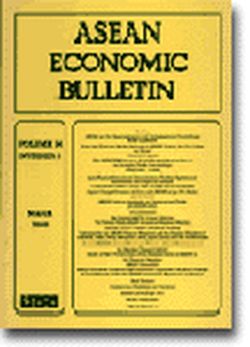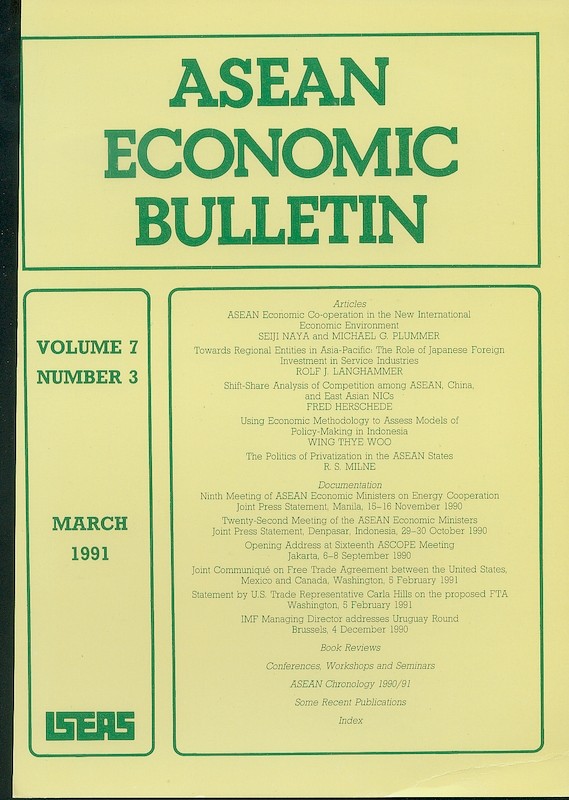ASEAN Economic Bulletin Vol. 13/1 (Jul 1996)

Date of publication:
July 1996
Publisher:
Institute of Southeast Asian Studies
Number of pages:
158
Code:
AE13/1
Reviews
Contents
-
Preliminary pages
-
Beyond "Miracles" and Total Factor Productivity: The Singapore Experience, by Linda Low, Goh Keng Swee, authors see abstractNeither neoclassical nor new growth theories have satisfactorily explained the growth phenomenon observed in East Asia. Paul Krugman's depiction of East Asian economies as "sausage makers" based on Alwyn Young's measures of total factor productivity (TFP) has brought about a contrary view to the East Asian miracle. The prognosis from dismal TFP growth implies that economies like Singapore will slow down as its reserves of factor inputs are exhausted. We observe that adaptive factor improvements often missed out in measurement of factor productivity may have led to an oversimplification of growth by "perspiration" rather than by "inspiration". A more insightful reworking of growth data in Singapore suggests that Krugman's thesis may have been overly pessimistic. Comparisons drawn with Hong Kong in particular are misleading as the two city-states are quite unlike in many aspects. In the final analysis, Singapore's growth prospects can be maintained. Higher factor productivity, and a more matured economy underpinned by continued sound economic policies and regional stability are the most crucial considerations.
-
Some Implications of AFTA for Thailand: A Revealed Comparative Advantage Approach, by Andrew Maule, author see abstractThe ASEAN Free Trade Area (AFTA) agreement was signed by the members of the Association of Southeast Asian Nations (ASEAN) in 1992. The purpose of this article is to provide some quantitative assessment of the importance of this economic agreement for one of its signatories, Thailand. The principal empirical tool used is that of revealed comparative advantage (RCA), developed by Bela Balassa (1965).
-
Impact of Free Trade on Industrial Pollution: Do Pollution Havens Exist?, by Anggito Abimanyu, author see abstractThis article examines empirically the effects of international trade and international trade agreements on the environment of a country and countries in the APEC regional co-operation, and the way these effects pertain to international environmental policy. It examines how the structure of manufacturing exports and imports varies both across countries and through time, and focuses on dirty-product migration from developed countries (DC) as a result of trade liberalization. Results show that dirty products have expanded faster in developing countries than the average of all industrial countries over the past decade. Testing of the pollution havens hypotheses, however, is hindered by the lack of evidence of freer trade flows due to different environmental standards. The international pattern of dirty-product migration in the APEC region using a two-stage regression with cross-section data sets from two different years, statistically tested that the macroeconomic and import tariffs had the relatively highest significant influence. It has also been concluded, however, that the difference in environmental standards between DCs and LDCs was not a significant variable influencing the location of dirty-product import.
-
Linkages among the ASEAN Economies: A Multi-Country Model Analysis, by Linda Low, Toh Mun Heng, authors see abstractThis article considers the linkages of the ASEAN economies by means of a multi-country Johansen type econometric model. The intra-country and cross-country impact on GDP, employment, imports, capital accumulation, interest rate and consumption as a result of technical change, changes in wage rate, exports and standard monetary and fiscal instruments were estimated. Furthermore, the model enables the conduct of simulations in assessing the formation of a free trade area among the Southeast Asian economies and trade liberalizing measures granted from one trade bloc to another.
-
Sectoral Specialization and Competitive Advantage: Hong Kong Investments in the ASEAN Region, by Henry Yeung Wai-Chung, author see abstractForeign direct investment has been a critical component of the remarkable growth of ASEAN countries in recent years. There is, however, a clear link between the sectoral specialization of foreign investment and the competitive advantage of host ASEAN countries. Using unpublished secondary data on Hong Kong investments in the ASEAN region, this article addresses this important topic which is usually overlooked in the existing literature. It argues that Hong Kong investments tend to specialize in different economic sectors of host ASEAN countries. This sectoral bias of Hong Kong investments results in a regional division of investment that largely conforms to the competitiveness of individual ASEAN countries. Some implications for host ASEAN countries are also discussed in this article.
-
Malaysia's Bond Market: The Further Reforms Required to Escape Underdevelopment, by R Thillainathan, author see abstractThis article explores why the market for Malaysian Government Securities (MGS) is still caught in the trap of underdevelopment and what are the further reforms required to escape this trap. It also examines the extent and nature of the development of the fixed rate market in Private Debt Securities (PDS). It is argued that if the cash and futures markets are well developed, investors and speculators will be able to trade on their views on interest rates, on the shape of the yield curve, on the spread between MGS and PDS yields and on the spread in yields between the cash and futures markets, thus boosting trading volume and market liquidity.
-
DOCUMENTATION: Ninth Meeting of the AFTA Council Singapore, 26 April 1996. Joint Press Statement
-
DOCUMENTATION: Third APEC Finance Ministers Meeting. Kyoto, Japan, 17 March 1996. Joint Ministerial Statement
-
DOCUMENTATION: APEC Human Resource Development Ministers Issue Joint Statement Manila, 11 January 1996
-
DOCUMENTATION: Chairman's Statement of the Asia-Europe Meeting. Bangkok, 2 March 1996
-
BOOK REVIEWS: Review of Sectoral Flows of Foreign Direct Investment in Asia and the Pacific. ESCAP Studies in Trade and Investment 5
-
BOOK REVIEW: World Development Report 1995: Workers in an Integrating World. By The World Bank.
-
BOOK REVIEW: The Emerging Asian Bond Market. By The World Bank
-
BOOK REVIEW: Economic Cooperation in the Greater Mekong Subregion Toward Implementation. By Asian Development Bank
-
Conferences, Workshops and Seminars, ASEAN Chronology 1996, Recent Publications






